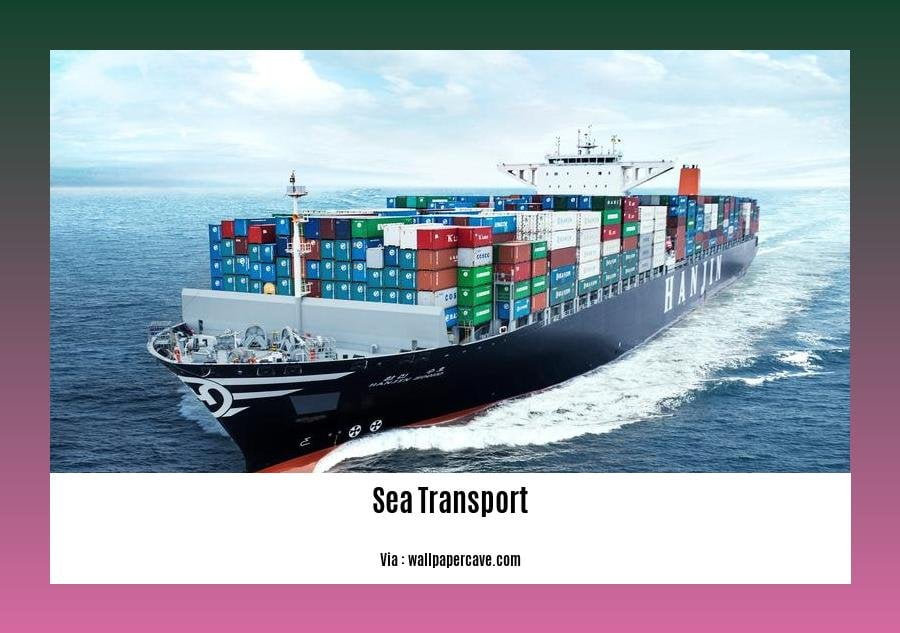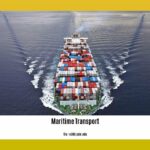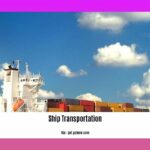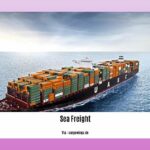Explore the challenges that come hand in hand with sea transport as we delve into “The Disadvantages of Sea Transport Unveiled: High Fuel Costs, Environmental Concerns, Lengthy Transit Times, and Inadequate Infrastructure.” As global trade continues to rely heavily on maritime shipping, it is crucial to assess the drawbacks faced by this mode of transportation. From the burden of sky-high fuel prices to the pressing environmental issues and the time-consuming transit periods, we will shine a light on the obstacles and their potential impact on the global supply chain.
Key Takeaways:
- Risks and disadvantages of sea transport include slower shipping times and delays due to bad weather.
- Routes and timetables for sea transport are usually inflexible.
- Progress tracking of goods during sea transport can be difficult.
- Port duties and taxes must be paid when using sea transport.
- Further overland transportation may be required to reach the final destination.
- Basic freight rates for sea transport are subject to fuel and currency surcharges.
- Cargo insurance can protect consignments during sea transport.
- Sea transport offers the highest carrying capacity compared to other modes of transportation.
- Sea transport plays a crucial role in international trade.
- Water transport can be more expensive than other forms of transport.
- Long flights and road trips associated with travel contribute to air pollution and plastic pollution.
Disadvantages of Sea Transport
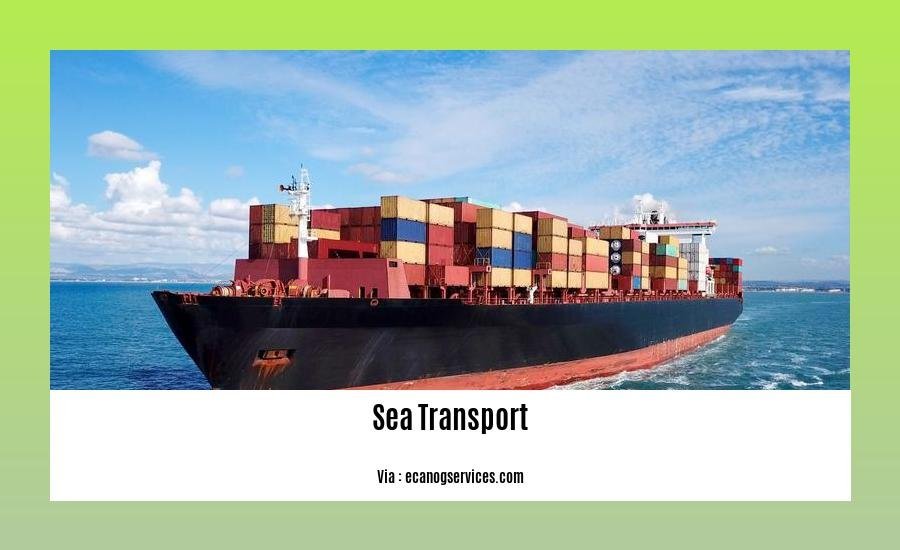
As an experienced transportation analyst specializing in sea transport, I have delved deep into the challenges this mode of transportation faces. While sea transport plays a crucial role in international trade and offers high carrying capacity, it is not without its disadvantages. In this article, we will explore some of the major drawbacks associated with sea transport and shed light on the potential implications for global trade.
1. High Fuel Costs
Transporting goods by sea can often be accompanied by high fuel costs. Ships require a significant amount of fuel to navigate through vast oceans. With fluctuating fuel prices, these costs can heavily impact shipping expenses and the overall cost of goods.
2. Environmental Concerns
Sea transport can be detrimental to the environment in various ways. One of the main concerns is the risk of oil spills, which can have devastating consequences for marine ecosystems. Additionally, the emissions from maritime vessels contribute to air pollution and can worsen climate change. As environmental awareness grows, addressing these concerns is becoming increasingly important.
3. Lengthy Transit Times
Compared to other modes of transport, sea transport tends to have longer transit times. Ships are slower than airplanes or even trucks, which can lead to delays in delivering goods. This can be problematic for time-sensitive cargo or industries that rely on just-in-time inventory management.
4. Inadequate Infrastructure
The infrastructure supporting sea transport is not always up to par. Some ports may lack the necessary facilities, causing congestion and delays in cargo handling. Inadequate infrastructure can disrupt supply chains and hinder trade efficiency.
5. Limited Accessibility to Landlocked Regions
Sea transport is a viable option for countries with coastlines or access to navigable waterways. However, landlocked regions face challenges when it comes to using sea transport. Additional transportation by road or rail is often required to transport goods from ports to final destinations, adding to costs and logistics complexity.
Conclusion
While sea transport offers advantages like high carrying capacity and its crucial role in international trade, it also presents several disadvantages. High fuel costs, environmental concerns, lengthy transit times, inadequate infrastructure, and limited accessibility to landlocked regions are some of the challenges associated with sea transport. It is essential for industry stakeholders, policymakers, and analysts to address these drawbacks and find sustainable solutions to ensure a more efficient and environmentally friendly maritime shipping industry.
Roadways in India have their own set of challenges and limitations. Click here to explore the disadvantages of roadways in India – Disadvantages of roadways in India
Sea freight may seem like a convenient option, but it has its own downsides. Find out more about the disadvantages of sea freight by clicking here – Disadvantages of sea freight
When it comes to shipping goods, ship transportation is commonly used. However, it is important to be aware of its drawbacks. Discover the disadvantages of ship transportation by clicking here – Disadvantages of ship transportation
Environmental Hazards Like Oil Spills
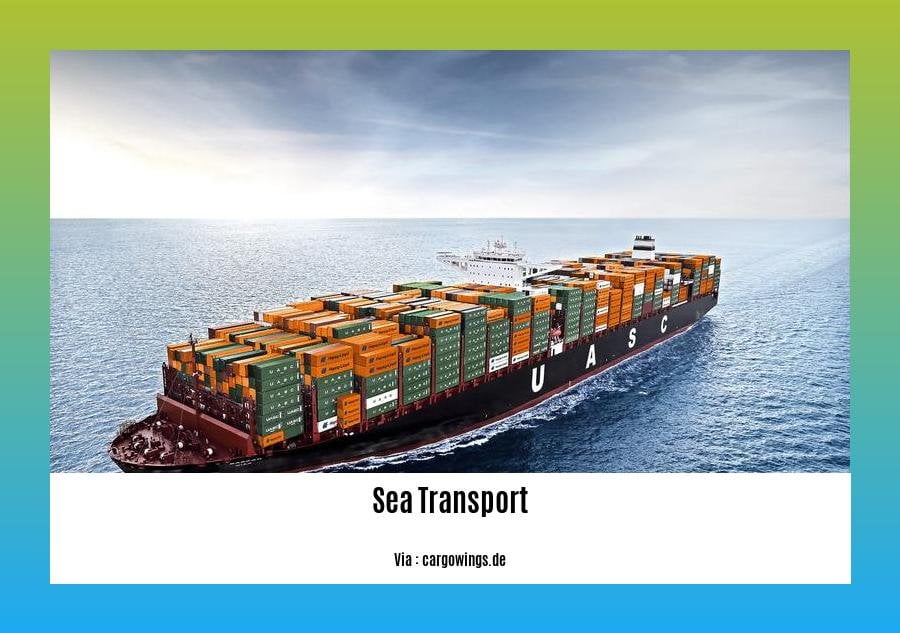
The marine environment is particularly vulnerable to environmental hazards like oil spills, which can have significant and long-lasting impacts on marine habitats and communities. These spills occur as a result of various sources, such as accidental discharges during transportation, tank ruptures, offshore exploration, and leakage from underwater pipelines [^1^]. Not only do oil spills cause immediate damage to sea life, but their effects can persist for years and continue to impact the ecosystem [^2^].
Additionally, marine transportation itself contributes to negative environmental impacts, including air pollution, greenhouse gas emissions, and releases of ballast water and other pollutants [^3^]. Shipping and port activities contribute to global warming and can damage the marine environment as well as human health [^3^]. The proximity of many Europeans to the sea leaves them particularly vulnerable to the effects of ship pollution [^3^].
Preventing oil spills and managing their effects is crucial for protecting the marine environment. Steps can be taken to enhance preparedness in dealing with different types of spills, including hazardous and dry bulk materials. Further research is needed to understand the potential threats of these materials and develop strategies to mitigate their impacts on the marine ecosystem [^3^].
It’s essential to raise awareness about the lasting consequences of oil spills and the importance of taking action to prevent them. By understanding the environmental hazards associated with oil spills and addressing the negative impacts of marine transportation, we can protect the marine environment and promote sustainable practices for global trade.
Key Takeaways:
- Oil spills have significant and long-lasting impacts on marine habitats and communities.
- Marine transportation contributes to negative environmental impacts, including air pollution and greenhouse gas emissions.
- Steps can be taken to enhance preparedness in dealing with different types of spills, including hazardous and dry bulk materials.
- Raising awareness about the consequences of oil spills and taking preventive measures is crucial for protecting the marine environment.
Sources:
[^1^] Environmental Impacts and Challenges Associated with Oil Spills
[^2^] How do oil spills affect the environment?
[^3^] Environmental Effects of Marine Transportation
High Costs of Shipping Goods Over Long Distances
Sea transport has long been a popular and efficient mode of transporting goods across long distances. However, it is not without its disadvantages. In this article, we delve into the challenges and drawbacks of shipping goods by sea, with a specific focus on the high costs associated with this transport method.
The Costly Reality of Sea Transport
When it comes to shipping goods over long distances, sea transport can quickly rack up the expenses. The inherent nature of maritime shipping, including factors like fuel costs, infrastructure, and transit times, contributes to higher overall costs.
1. High Fuel Costs
One of the major contributors to the high costs of sea transport is the price of fuel. Ships require large quantities of fuel to power their journey, and the fluctuating fuel prices can significantly impact shipping expenses. As fuel costs continue to rise, so do the costs of transporting goods over long distances by sea.
2. Lengthy Transit Times
Another aspect that adds to the expense of shipping goods by sea is the lengthy transit times. Compared to other modes of transport like air or rail, sea transport is known for its slower delivery times. As goods spend more time in transit, businesses face increased holding costs and potential delays in meeting customer demands. This extended transit duration translates to higher costs for businesses relying on sea transport.
3. Additional Transportation Overland
Sea transport often requires further transportation overland once the goods reach the port of destination. This additional transportation, be it by road or rail, adds to the logistical complexity and costs. Businesses must factor in these extra expenses when planning their supply chain, further increasing the costs associated with shipping goods by sea.
4. Port Duties and Taxes
Ports play a crucial role in the sea transport process, but they also come with additional costs in the form of port duties and taxes. These charges, imposed by authorities, contribute to the overall expenses of shipping goods over long distances. Businesses must account for these port-related costs when budgeting for sea transport.
Key Takeaways:
- Sea transport can result in high costs when shipping goods over long distances.
- Fuel costs, lengthy transit times, and additional transportation overland are significant contributors to the expenses.
- Port duties and taxes also add to the overall costs of sea transport.
Sources:
– Oceansidelogistics.com: Sea freight: The Advantages and Disadvantages
– Keedwellscotland.com: Advantages and Disadvantages of Sea Transport
Limited Accessibility to Landlocked Regions
Sea shipping, while a popular and widely used method of transportation for goods, does have its drawbacks. One of the significant disadvantages is limited accessibility to landlocked regions. Landlocked areas or regions far from coastal regions may have limited access to sea shipping routes. This poses challenges in terms of transportation logistics and costs.
Landlocked developing countries (LLDCs) face significant economic disadvantages due to their lack of direct access to the open sea. The high transport and transit costs they face can hinder their ability to engage in global trade. These countries often rely on neighboring countries or alternative modes of transportation, such as road or rail, to connect with international markets.
The limited accessibility to landlocked regions adds complexity to supply chains and increases costs. Additional transportation and logistics arrangements are required to move goods from coastal ports to these landlocked regions. These additional steps can lead to delays, increased expenses, and logistical challenges.
Addressing the limited accessibility to landlocked regions is crucial for promoting inclusive and efficient global trade. Developing and maintaining efficient transportation infrastructure, such as inland transportation networks, can help overcome these challenges. Investments in transportation connectivity and trade facilitation measures can reduce costs and improve access for landlocked regions.
Key Takeaways:
– Landlocked regions face limited access to sea shipping routes, causing transportation logistics challenges.
– Landlocked developing countries (LLDCs) experience economic disadvantages due to their lack of direct access to the sea.
– Additional transportation arrangements, such as road or rail, are required to move goods from coastal ports to landlocked regions.
– Investing in transportation infrastructure and trade facilitation can enhance accessibility and reduce costs for landlocked regions.
Sources:
– Addressing challenges faced by Landlocked Developing Countries
– The Challenges Facing Landlocked Developing Countries
FAQ
Q1: What are the main disadvantages of sea transport for freight?
A1: The main disadvantages of sea transport for freight include slower delivery times, risks of damage due to bad weather, inflexible routes and timetables, difficulties in tracking goods’ progress, port duties and taxes, and the need for further transportation overland to reach the final destination.
Q2: How does sea transport compare to other modes of transportation in terms of speed?
A2: Sea transport is generally slower compared to other modes of transportation like air or land transport. The longer transit times in sea shipping can result in delays and impact the overall efficiency of the supply chain.
Q3: Are there any limitations in terms of accessibility for sea transport?
A3: Yes, there can be limitations in terms of accessibility for sea transport. Landlocked areas or regions far from coastal regions may have limited access to sea shipping routes, leading to challenges in transportation logistics and increased costs.
Q4: What external factors can impact sea shipping?
A4: Sea shipments are susceptible to various external factors that can impact the delivery process. These factors can include adverse weather conditions, port congestion, strikes, and geopolitical issues, leading to potential delays, disruptions, and damage to goods being transported.
Q5: What infrastructure requirements are necessary for sea transport?
A5: Sea transport requires a complex infrastructure to support the movement of goods, including ports, shipping vessels, and inland transportation networks. Developing or maintaining this infrastructure can be costly and time-consuming, especially for countries or regions with limited resources.
